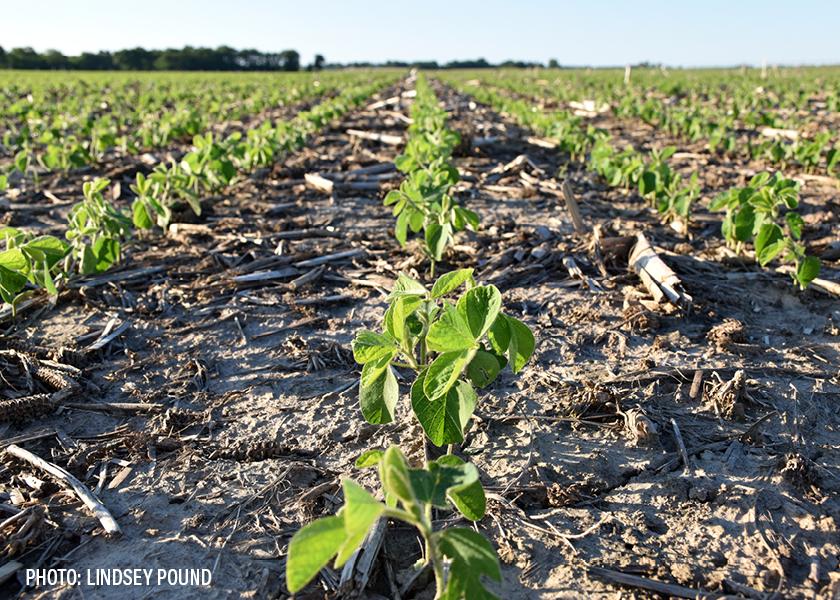The Great Debate: What's the Ideal Row Spacing for Planting Soybeans?

Warmer temperatures and a drier forecast are pointing to the possibility of more farmers starting to plant across the Midwest this week. As farmers gear up and nail down planting depth, row spacing is also a crucial decision that could impact final yields.
Farm Journal Field Agronomist Ken Ferrie, who also owns Crop-Tech Consulting in Heyworth, Ill., says Farm Journal test plot data last fall revealed narrower row spacing provided a boost in overall yields.
In the Farm Journal Test Plots, Ferrie explored the performance of bush beans compared to narrow-row soybeans. The bush beans were planted in six maturity groups from a 2.9 up to a 4.0 in both 15” rows and 30” rows.
“It looks like the narrow-row beans did respond to narrower rows by 3 bu. to 5 bu., meaning they were 3 bu. to 5 bu. better in 15s than they were in 30s,” he says. “It looks like the bush beans had no response to row spacing, which is also kind of interesting.”
Related Story: 2022 Farm Journal Test Plots Early Results
The other variable farmers sometimes forget, according to Ferrie, is the correlation between row spacing and weed control. He says as farmers prepare for planting, that's one thing that needs to be considered in their overall crop plans.
“One of the challenges that we run into is as farmers are putting the plan together, and you may be thinking weeds on this spectrum, and then somebody over here is thinking about planting and row spacing population. And those two have to go together,” he says.
He says in some cases, the adjustment to row spacing will impact weed control more than yield.
“We know from studies that we've done clear back in 1992, already, that we can pull those bean populations below 120,000 and not affect yield. But we do affect weed control,” he says.
Related Story: Prepare For Planting: This is One of the Biggest Misconceptions About Effectively Combatting Problematic Weeds
Ferrie points out that gauging your possible weed pressure hinges on your row width.
“A wide row at a low population is going to take me longer to canopy,” Ferrie says.
According to Pioneer, the most common row spacing options for soybeans in the U.S. are 15-inch and 30-inch rows, each accounting for more than one-third of total acreage.
While numerous field research studies and trials have worked to determine the optimal row spacing for soybeans, Pioneer says previous studies have found that soybean yield potential is often greater with row spacings narrower than 30 inches.
“Other than yield, the most important factor driving soybean row spacing practices are equipment and time management during the planting season,” said Mark Jeschke, Pioneer agronomy manager. “One of the key issues growers must consider is whether the economics of their farm justify having a machine dedicated specifically to planting soybeans.”
Related story: With Soybean Planting Populations, How Low Can You Go?
The other factor that could impact row spacing is the need for fungicide and insecticide applications.
Historically, in Farm Journal Test Plots, Ferrie says he has seen a positive ROI about 50% of the time a fungicide was used in soybeans. Seed maturity, weather conditions and disease pressure influence whether a fungicide will pay for itself.
What other things should a farmer consider when determining soybean populations for 2023? Crop-Tech Consulting has a detailed list on just how low you can go with your planting populations.
Related Stories:
With Soybean Planting Populations, How Low Can You Go?







